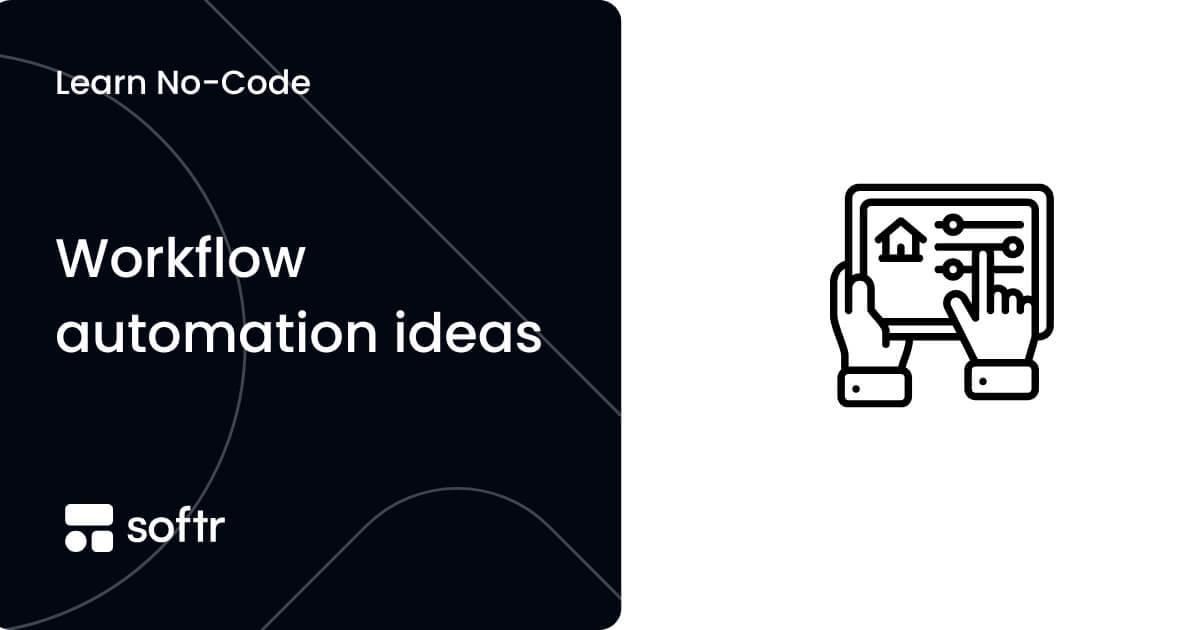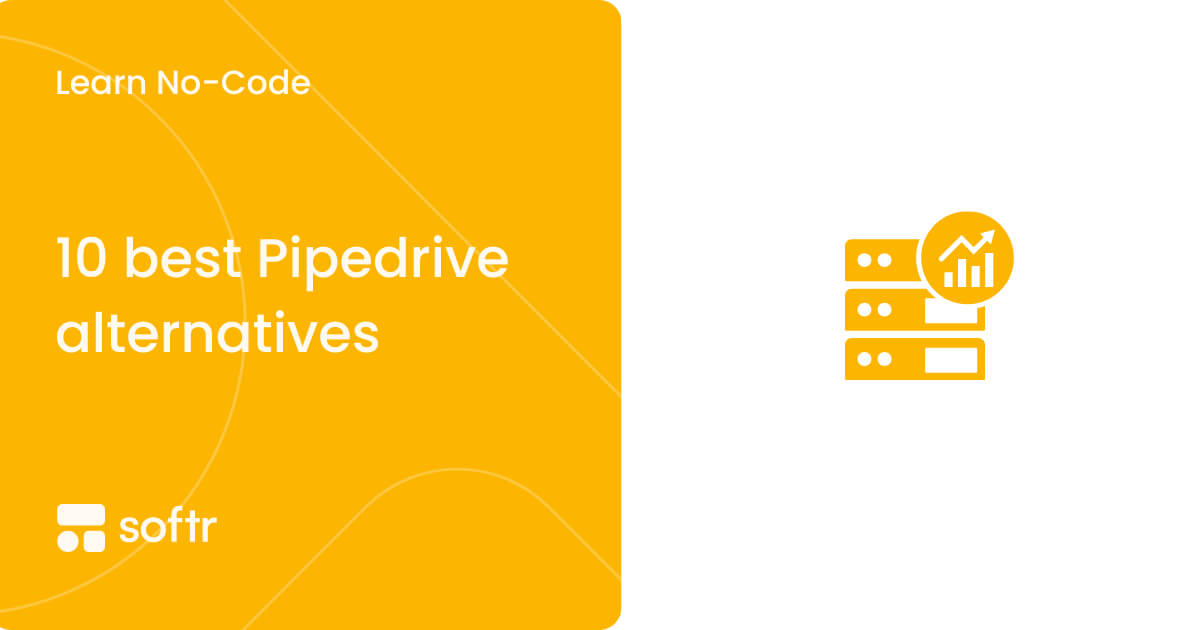What is no-code and what are its benefits?

It might seem like phrases such as “no-code” or “the no-code movement” have popped up out of nowhere. But they are actually just the latest evolution in a decades-long push to make the software more accessible. If you’re wondering what no-code is, what the benefits of no-code are, and why you should care about it, then you're in the right place.
What is no-code and the no-code movement?
At its simplest, “no-code development” is the term given to a variety of tools that help people build software without code.
No-code vs. low-code

Source: Zoho
As the names suggest, the difference between no-code and low-code is the amount of coding you need to know in order to get full functionality from the platform.
In a no-code environment, the end user does not need any coding knowledge at all. Whether using basic features, advanced features, or building something totally custom, no-code tools do not require a single line of code to function properly. We'll learn more about the benefits of no-code further in this article.
When considering low-code vs no-code, low-code tools typically offer a no-code foundation but require some coding to customize or operate the tool. Luckily, there are many open source libraries where you can copy-paste the line(s) of code you might need, making them easier for no-coders to use.
What’s the point of the no-code movement?
The “no-code movement” refers to the group of people evangelizing no-code platforms or using no-code tools.
These evangelists usually come in one of three categories:
- Creators: People who like using no-code tools and building no-code apps or websites;
- Founders: People who make platforms that enable other people to build no-code apps or websites;
- Community Builders: People who build businesses around supporting the no-code community and its creators.
Related Post: The Rise of the Creator Economy
And in general, they have a few key goals:
- Awareness: They want to make more people (eventually: the general public) aware of no-code building;
- Usage: They want to attract more Creators and Community Builders who will create no-code apps and bring more people into the ecosystem;
- Innovation: They want to attract new innovators and Founders to expand the limits of what no-code tools can do.
What can you build with no-code tools?

Source: Medium
Want to build something without code? There are multiple use cases. Here are some of the most popular:
1. Custom websites and landing pages
No-code platforms make it simple to build 100% customized websites and landing pages, whether for personal or business use. You can choose whatever basic sections you want, the color scheme, and even interactive elements in drag-and-drop fashion with no-code tools.
2. E-commerce sites
Going beyond a simple informational website, you can use no-code tools to build an e-commerce site to sell your digital and physical goods. You can design the site just as you would any other website, then integrate payment tools like Stripe without needing to use any code. From there, you can accept payments and set up digital delivery (via email or download) or set up notifications to ship physical goods.
3. Community hubs
If you have a community of followers that you want to build a digital home for, you can now use no-code tools to build a custom online community just for you and your audience. You can add features like chat rooms, different channels, video sharing, and even gated / exclusive content with multiple no-code integrations. And, if you want, you can monetize the community and charge your members to maintain access.
4. Content delivery hubs
If you run a newsletter, blog, or online course, you can build a content delivery hub with no-code tools. You can set it up to be public or private, free or paid, and even set up advanced features like drip campaigns or specific send out dates.
5. Resource listings and directories
No-code platforms like Softr make it easy for you to create custom information repositories and even let people submit their own ideas or tools (for instance: Tools for freelancers, top courses for artists, or something similar). If you want to monetize this kind of site, you can easily do so with affiliate links or sponsored listings, making it potentially profitable if you already have an audience looking for this kind of information.
6. Client portals
Easily communicate with clients - sharing information, files, and messages - with a no-code foundation. Tools like Softr make it really easy to create your own client portal for customers, investors, and even employees (really: whoever you define as a “client”). With integrations, you can extend this portal even further to link up with payment portals or email platforms as well.
Benefits of no-code
No code development has a lot of benefits. Here are some of them:
Speed: No code platforms make it easy to get a rudimentary app or website out quickly, helping you get your creations into the world faster.
Business Value: Because you can produce things more quickly - with multiple productivity shortcuts - you can validate business ideas and iterate more quickly than you could if working from a code base. To streamline your planning process, use tools that generate professional plans with ease, and refer to business plan examples for startups for guidance and inspiration.
Cost: Building yourself on a no-code platform is nearly always cheaper than having to hire a coder or agency to build a coded app or website for you.
Disadvantages of no-code
While the benefits of no-code are fantastic, no-code development in its current form also has some drawbacks that you should be aware of:
Security: When you use no-code platforms, you are at the mercy of whatever security and encryption the platform built for itself. That’s why it’s important to choose a platform that has high security standards and encryption.
Limited flexibility and customizability: No-code is getting more powerful every day, but it’s still nowhere near as flexible or customizable as writing your own code.
You may not own your source code: While you’re building in no-code, you’re actually generating a codebase in the background. But unfortunately, you often don’t own the code base, which means you’re stuck using whatever platform you started with.
How businesses and entrepreneurs use no-code tools
Different kinds of creators, businesses, and entrepreneurs might use no-code tools in a variety of ways. Here are some of the primary ways that no-code tools apply to individuals and businesses and benefit them.
Freelancers
Freelancers will often use no-code tools for a few reasons:
- Basic sales and marketing: Websites, contact forms, or a lightweight CRM.
- Client dashboards: Making it easy for clients to see project progress.
- Ecommerce scaling: Selling digital goods or courses to scale their businesses.
Independent creators
Independent creators can use no-code tools in a lot of different ways:
- Ecommerce, sales, and marketing: Websites and selling merch or other goods.
- Audience connection and monetization: Creating a custom membership website.
- Building micro-SaaS tools to sell to their audience: Building net-new technology platforms that solve a niche need for their audience.
Startups and Small to Medium Businesses (SMBs)
No-code is powerful for startups and can help with:
- Building an MVP: Starting out the entire organization with no-code to speed up development.
- Building and testing new features: Getting something shipped quickly before committing code.
- Process scaling: Building internal processes (payroll, payments, and workflow automation) with no-code tools.
- Client portals: Making it easy to interact with clients.
Enterprises
Enterprises might turn to no-code to help navigate the lengthy enterprise building process:
- Internal tools: Build automation tools to help save time and standardize small, repetitive tasks.
- Rapid testing and prototyping: Test new ideas quickly and cheaply.
- Adding no-code elements to existing technology products: Expanding functionality of their core products.
Getting started with no-code
If you’re curious and getting started with no-code, here’s a simple process you can follow.
1. Pick your audience
You first need to know who you are trying to help. This can be anyone - even just yourself. But starting with a real person or persona helps you ground your efforts, which will lead to a better outcome in the end.
2. Pick your problem or solution
Once you know who you’re helping, think about what problem you want to solve or what outcome you want to provide. If you’re not sure, you can try anything to get started; practice matters more than anything else at this stage.
3. Pick your platforms
Pick a no-code platform that will power your chosen solution. It’s critical to know what you want to build - a website? A course platform? A repository? Something else? - because that will dictate which platforms you can use. For example, Softr can build a wide variety of use cases, but other no-code builders might only be able to power a repository style website.
4. Learn from no-code experts
A great way to stay in touch with the no-code community is to follow no-code experts on Twitter:
- JT from No Code Founders
- Max Haining from 100 days of no code
- Helen Ryles from Makerpad
- Emily Lonetto from Voiceflow
- Softr on Twitter
5. Build!
Now’s the time to get your hands dirty. Give it a try building some of the core features of your solutions and go from there. It may seem daunting, but the reality is you will improve rapidly with every little effort you make, then you’ll be building full sites and apps in no time.
Making technology accessible for everyone
The real promise of no-code is that it makes building technology accessible to significantly more people without needing to learn a whole new language (coding). Whether building an internal application, community hub, or even a whole business, no code puts the power back into the hands of people, making their creativity the only limit.
About Softr
Softr is an easy-to-use no-code platform that turns Airtable bases into powerful web apps and client portals. Softr offers a way for you to authenticate your end-users, control access to your content and data based on conditional rules like roles, logged-in status, subscription plans etc. If you're using Airtable as a product catalog you can use a Softr template to build your e-commerce website. Or maybe you'd like to build a custom website for your travel journal, there's a template for that too!








